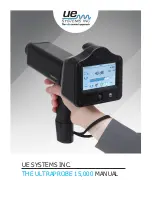
32
Digital Ground Resistance Tester Model 4500
Y
Z
X
X
v
TEST
RANGE
TEST CURRENT
2 10 50
2
20 200 2 20
DIGITAL GROUND
RESISTANCE
TESTER
MODEL 4500
Figure 17
4.8
Soil Resistivity Measurements
Why make soil resistivity measurements?
Soil resistivity measurements have a threefold purpose. First, such data
are used to make sub-surface geophysical surveys as an aid in identifying
ore locations, depth to bed rock and other geological phenomena. Second,
resistivity has a direct impact on the degree of corrosion in underground
pipelines. A decrease in resistivity relates to in increase in corrosion activ-
ity and therefore dictates the protective treatment to be used. Third, soil
resistivity directly affects the design of a grounding system, and it is to that
task that this discussion is directed. When designing an extensive ground
-
ing system, it is advisable to locate the area of lowest soil resistivity in
order to achieve the most economical grounding installation.
Resistivity measurements are of two types, the 2-point and the 4-point
method. The 2-point method is simply the resistance measured between
two points. For most applications, the most accurate method is the 4-
point method, which is used in the Model 4500 Ground Tester. The 4-
point method, as the name implies, requires the insertion of four equally
spaced, and in-line, electrodes into the test area. A known current from a
constant current generator is passed between the outermost electrodes.
The potential drop (a function of the resistance) is then measured across
the two innermost electrodes. Model 4500 is calibrated to read directly in
ohms.
1000A x 1
F
(in kHz)
Содержание 450.100
Страница 1: ...DIGITAL GROUND RESISTANCE TESTER 4500 E N G L I S H User Manual...
Страница 47: ......















































